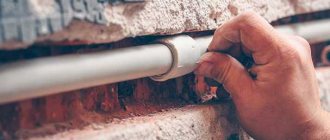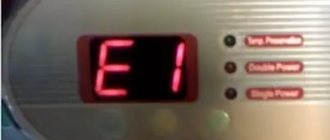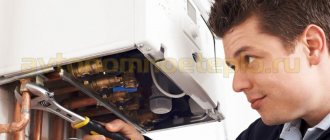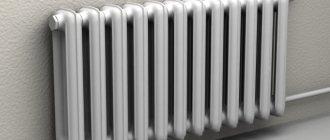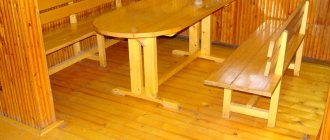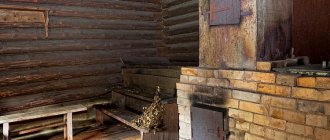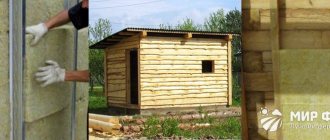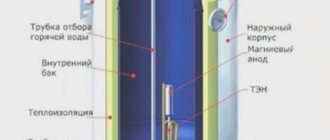A boiler is a special device used for continuous heating of cold water. Situations arise in which it is necessary to remove liquid from the device reservoir. Therefore, you need to know how to drain water from a 50-liter Thermex water heater without damaging important components of the device. All procedures must be carried out taking into account the design features of the device.
A Thermex water heater is a special tank with a heating element inside.
Features of the Thermex water heater
The company is engaged only in the production of heating equipment. Thermex devices are characterized by a long service life, good build quality, and economical energy consumption.
You can purchase equipment from this brand in the KVANTA+ online store. The structure of the boiler and the features of its operation depend on the model.
Standard devices consist of the following components:
- Steel protective casing. Sometimes medium-sized devices are equipped with a durable plastic case.
- A tank in which liquid is accumulated and heated. The element is made of metal coated with an anti-corrosion compound.
- Anode made of titanium or magnesium. The part protects the heating element and tank from the destructive effects of moisture.
- A thermostat that regulates the temperature of the liquid in the boiler.
- The heating element located at the bottom of the device. The part has the form of a spiral-shaped nichrome wire, which is placed in a copper casing.
- Branch pipes for connecting the device to the cold water system and discharging the heated liquid.
Standard devices consist of a thermostat and a heating element.
Draining water from a simple design device is not difficult. Such devices do not have a special hole.
They are filled with liquid through the top. To empty the tank, you need to turn the housing over. Emptying a boiler with a separate hole is somewhat more difficult.
When to drain water
If used regularly, there is no need to periodically empty the Thermex water heater. Water removal is only required in special cases.
The water heater is working, but is rarely used
If the device is not used for a long time, the water stagnates. Microorganisms accumulate in it, creating an unpleasant odor. To get rid of this problem, the tank is emptied and then filled with clean liquid.
It is necessary to drain the water if the water heater is working properly, but is rarely used.
Device failure
Over time, the anode and heating element may fail. To replace these parts, the device is disassembled after emptying the tank.
The following signs indicate the need for draining:
- Frequent operation of the circuit breaker. This happens when a large amount of scale is deposited on the metal elements of the device.
- The appearance of extraneous sounds. The noise occurs when pieces of scale fall to the bottom.
- The appearance of a leak. The problem occurs when the tank and body are corroded, seals are worn, or connections are loosened.
- Weakness of pressure. This occurs when the outlets are clogged with scale.
- Heating too slow.
- Leakage of a large amount of water through the safety valve.
Other cases
Fluid removal may be necessary if:
- The boiler needs to be descaled, especially if the water contains a lot of foreign impurities. Cleaning is carried out every 2-3 years, otherwise accumulating scale will interfere with the operation of the device. The tank is also emptied before such a procedure.
- The device is installed in an unheated house. In this case, the tank must be emptied in the fall. The freezing liquid increases in volume, beginning to put pressure on the walls of the tank. This leads to rapid breakdown of the device.
- It is necessary to change the installation location of the water heater.
Liquid removal may be necessary if the boiler needs to be descaled.
When not to drain
If it is necessary to preserve the device for a long time, it is not necessary to completely empty it. There should be a small amount of liquid left in the tank. Otherwise, traces of corrosion will appear. Accidentally turning on an empty appliance may cause a fire.
During the warranty period, independent repairs and cleaning are not permitted. At this time, only service center specialists can work with the device.
Do I need to drain the water from my water heater?
First, about the reasons that may cause such a need. In fact, it is not recommended to empty the tank unnecessarily, much less keep it empty. After all, instead of water, a vacuum will not arise inside the container; air will take its place, and it will negatively affect the condition of the tank and heating element.
Although there are exceptions - stainless steel containers and heating elements with ceramic coating are not afraid of such influences. But most inexpensive boilers do not have any protection and it is better to keep them filled.
For reference. If it is expected that the device will not be used for a long time, then the water in it can be updated once every 2 weeks by opening the hot tap on the mixer for a few minutes. This way the water will not stagnate and harmful microorganisms will not appear in it.
There are 2 serious reasons that make it necessary to drain the water from the water heater:
- maintenance or repairs are required. This includes descaling the container and replacing the protective magnesium anode. It is recommended to perform the operation once every 2 years.
- the room where the storage boiler is located is not heated in winter. To avoid rupture of the tank as a result of defrosting, you must keep the device turned on or empty it. There is no point in incurring unreasonable costs for electricity; it is better to drain the water from the boiler.
Preparatory actions
In all cases, draining the water heater tank is performed according to a single algorithm.
Materials and tools
During work you will need the following items and tools:
- container for collecting liquid;
- screwdriver;
- adjustable wrench;
- flexible tube.
You will need an adjustable wrench while working.
Reducing water temperature
To avoid injury, before draining, disconnect the device from the network and remove some of the hot liquid. The tank will fill with cold water and the water temperature will drop. To save money, the procedure can be performed in advance, using the resource for its intended purpose.
Complete disconnection from the network
All repair and maintenance work on the boiler is carried out by first stopping the electricity supply. To do this, de-energize the desired circuit breaker in the distribution panel, remove the power cable plug from the network.
Shut off water
If the supply pipe is equipped with a tap, use it. If the wiring is made without such an element, close the main cold water valve.
If the supply pipe is equipped with a tap, it is turned off.
Draining remaining liquid from the tank
Using a mixer, you cannot empty the boiler. When the liquid is consumed, the tank will begin to fill again. Cold liquid will displace hot liquid. Closing the tap at the inlet will also not work. More complex actions are required.
The heated water intake tube is installed in the upper part of the tank, because when heated, the liquid rises. The supply connection is located at the bottom of the housing, this prevents mixing. If you stop the supply, you can remove no more than a liter from the tank. Complete drainage is only possible when using a tube and air flow into the tank.
Depending on the structure of the device, these actions are performed in different ways.
DIY dismantling
You need to start by draining the water. Immediately unplug the device; if the wire leads to the shield, you need to disconnect all contacts.
Wait until the water in the tank cools down. We have already written in a separate article how to drain water from water heaters of different brands. Let us recall the main methods:
- Using a tee between the valve and the pipe.
- Through the safety valve flag. Lift it up and it will start draining. It will take a long time, especially if the tank volume is large.
- Prepare a deep container and a rubber hose.
- Place the container under the location of the check valve.
- Twist off the check valve. The water flow will be large, so you can connect a hose and lead it to the sewer.
This way the contents will quickly merge and you can get to work.
Simply turning on the hot water mixer and emptying the boiler will not work due to the fact that when water is consumed, the tank is simultaneously filled. Cold water pushes out hot water - that's how it works. It would seem that it is enough to turn off the tap at the inlet so that the boiler does not fill, but no. Everything is a little more complicated.
Illustration: Artyom Kozoriz / Lifehacker
The hot water intake tube is located at the very top of the tank, since when heated, the liquid rises upward. The supply fitting, on the contrary, is located at the bottom - this way the layers of water do not mix. Therefore, when the supply is shut off, no more than a liter will drain from the mixer.
The water can only be drained completely through the supply tube. In this case, it is necessary to ensure an air flow into the tank so that a vacuum is not created there and water drains. Depending on the type of connection, this is done in different ways: from simply opening the tap to removing the fittings.
Connection with two tees
The most convenient scheme for draining. Thanks to the taps installed on the tees, it allows air to enter the tank and quickly empty it.
- Make sure that the boiler inlet and outlet valves are closed. If they are not there, close the valves on the cold and hot water supply risers.
- Attach the hose to the drain valve at the tee at the inlet of the water heater and lower it into a basin, bucket or toilet. Open the tap.
- Now open the tap on the tee at the boiler outlet.
- Drain off all or part of the water. If you need to pause, turn off the tap at the water heater inlet and the water will stop flowing.
Connection with one tee
Not the worst connection option, which is still inferior in convenience to the previous one. A tee with a tap is installed only at the inlet, so to drain it you will have to let air into the tank through a mixer or by removing the pipe from the outlet fitting.
Illustration: Artyom Kozoriz / Lifehacker
There is a variation of this scheme without a tap at the outlet of the boiler. In fact, it is no different: air is released in the same ways.
- Check that the valves at the inlet and outlet of the water heater are closed. If they are absent, close the valves on the hot water and hot water risers.
- Attach the hose to the drain valve and lower it into a bucket or basin. Open the tap.
- At the nearest faucet, turn on the hot water and wait until all or the required amount has drained.
- If the water flows poorly or does not flow at all, it means that the air flow through the mixer is weak. In this case, remove the hose at the outlet fitting.
- To stop the water, you can turn off the drain valve or simply close the outlet fitting with your finger.
Connection without tees
The most inconvenient piping scheme is when the water heater is connected directly without tees and taps. We only have a safety valve with a drain outlet. Through it, although slowly, you can also drain water. In extreme cases, the valve can be easily removed, and then the flow will be much greater.
- Make sure that the cold and hot water supply risers are shut off.
- Close the tap at the inlet to the boiler and open hot water at the nearest mixer.
- Place a hose over the valve spout and lower it into a bucket or basin. Raise the valve flag.
- If the water drains very slowly or does not flow at all, remove the hose from the boiler outlet fitting to ensure air flow.
- If there is no flag on the valve or the water is still flowing weakly, disconnect the supply hose from the valve and insert a thin screwdriver into its body. This will raise the spring that blocks the reverse flow of water, and the stream will become significantly stronger.
- To speed up draining, you can simply remove the valve to completely free the water heater inlet fitting.
Methods for draining water from a Thermex water heater
There are 3 main methods for emptying the Thermex boiler tank.
Due to the safety valve
Easy removal of liquid is only possible if the device is installed correctly.
Draining is performed using a safety tap.
If all requirements are met, drainage is performed using a safety valve:
- Stop the cold water supply. Remove some of the liquid by opening the mixer.
- When the water stops flowing, close the tap and turn the valve on the safety block. The tank begins to fill with air, and the drainage resumes. If there is a special plug in the tank, it is removed. If there is no such part, use an additional drain valve installed on the DHW pipe. A 50 liter boiler is completely emptied in 40-60 minutes.
Through the cold water pipe hole
At the first stage, you need to reduce the pressure by using any method similar to the previous one.
After the water stops flowing through the mixer spout, perform the following actions:
- Before reducing the pressure, turn off the tap on the cold water outlet. After this, turn the handle of the heated liquid supply valve. This will stop the tank from filling.
- Place a large container under the boiler. Unscrew the cold water valve with a gas wrench and move the pipe to the side.
- Using the same tool, unscrew the safety valve. The water previously remaining in the tank begins to leak.
- Open the auxiliary drain plug. A stream will appear from the nozzle, the tank will be empty in 5 minutes. The speed of water flow can be changed by closing the air plug.
Through water intake and supply hoses
If the device is installed correctly, draining in this way takes no more than 10 minutes.
The procedure is carried out as follows:
- Disconnect the device from the electrical network.
- Remove water from the pipe by opening the mixer and hot water valve. There is no need to turn the tap handle; air should flow freely into the tank.
- Install the drain hose and open the tap. After releasing the tank, return the valve to its previous position.
How to drain water from a storage water heater
There are 3 ways to drain water from a water heater. Choosing the right one depends on the model and installation location.
Method 1: drain the water using a safety valve
When installing a storage type boiler, a safety valve is installed on the inlet pipe. It prevents liquid from flowing from the tank through the cold pipe in the opposite direction. The safety valve is equipped with a spring. The liquid, expanding when heated, overcomes the force of the spring and exits out through the channel.
The manufacturer equips the safety valve with a handle designed to check its operation and drain water from the tank.
Safety valve
When the handle is moved to a horizontal position, the spring is compressed, and liquid from the tank flows out through a special channel.
When water flows out, a vacuum is formed in the tank. It prevents normal drainage. To supply air to the boiler, open the hot water tap or unscrew the hose from the outlet pipe.
To eliminate the possibility of a plug in the drain channel, it is necessary to move the handle of the product to a horizontal position for a few seconds once every 20-30 days.
Some manufacturers produce a safety valve without a handle for draining water. To drain, you will need to unscrew the hose from the protective mechanism and forcefully press the spring. To do this, use a screwdriver, drill or other thin object. When draining water by mechanically compressing a spring, liquid will fall onto a person’s hands. To avoid burns, fill the tank with cold water.
Method 2: drain the water from the tank through the cold water hole
The drain hole of the safety mechanism has a small diameter. It will take a lot of time to drain the liquid. You can speed up the procedure by removing the inlet hose.
The work is performed in the following sequence:
- Cool the contents. To do this, open the hot water tap on the mixer. Entering the water heater, cold water displaces hot water. This eliminates the possibility of burns.
- Shut off the cold liquid supply valve.
- They provide air mass supply by opening the hot water shut-off device.
- Remove the safety valve. In this case, a container with a wide neck is installed under the inlet pipe. This could be a bucket, basin, etc.
- Drain the liquid. The intensity of the jet is regulated by supplying air to the container.
There are several options for piping a water heater. A tee is installed between the inlet pipe and the safety valve, the free outlet of which is equipped with a locking mechanism. This makes it easier to extract the liquid.
With this type of piping, a hose is attached to the tap installed on the tee and the contents of the boiler are poured into the sewer. Some experts install a tee with a locking mechanism on the outlet pipe. With its help you can regulate the degree of air supply.
Method 3: unscrew the incoming and outgoing hoses
This option is suitable for water heaters located above the bathtub or in places where there is no need to use a container to drain water. When carrying out the procedure, first unscrew the outlet hose, then the inlet hose. This way, the air mass is freely supplied to the container, and the contents of the tank are removed from the drain hole.
This method allows you to drain the water from the water heater in the shortest possible time. If during work it is necessary to stop the flow, shut off the outlet hose. This blocks air from entering the tank, which creates a vacuum inside and stops the release of the contents.
Recommendations from experts
By strictly following the instructions, you can empty the boiler without damaging the main components of the equipment. Before work, carefully study the user manual and become familiar with the design features of the device. The device must be disconnected from the electrical network: this prevents electric shock to a person.
If an unpleasant odor appears, it is necessary to rinse the tank 2-3 times. The procedure is repeated every 3 months. Do not drain water through the check valve or drain hole: this will cause clogging of these parts. Before connecting to the power supply, check whether there is liquid in the container. After completion of the work, the condition of the connections is assessed. If there is a leak, tighten the nuts more tightly using FUM tape.

